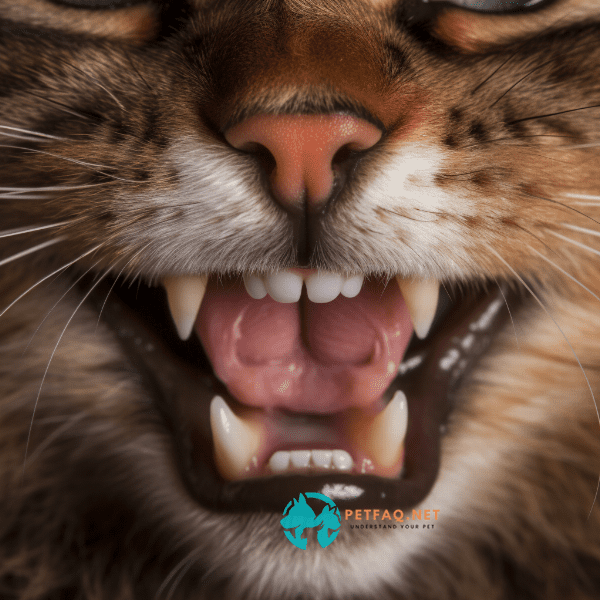Table of Contents
- Understanding Cat Teeth Plaque: Causes and Effects
- Signs of Cat Teeth Plaque: How to Identify the Problem
- Importance of Preventing Cat Teeth Plaque: Benefits for Your Cat’s Health
- Best Practices for Brushing Your Cat’s Teeth: A Step-by-Step Guide
- Alternative Options for Removing Cat Teeth Plaque: From Dental Treats to Water Additives
- Cat Teeth Plaque Prevention Through Diet: Choosing the Right Food for Your Feline
- Regular Veterinary Check-Ups: How They Can Help Prevent Cat Teeth Plaque
- Overcoming Resistance: Tips for Introducing Your Cat to Dental Care
- The Role of Genetics in Cat Teeth Plaque: Understanding Your Cat’s Unique Dental Health
- Long-Term Care: Maintaining Your Cat’s Dental Health for a Lifetime
Understanding Cat Teeth Plaque: Causes and Effects
When it comes to maintaining your cat’s dental health, understanding the causes and effects of Cat teeth plaque is crucial. Cat teeth plaque is a build-up of bacteria, saliva, and food particles that accumulate on your cat’s teeth over time. If left untreated, it can lead to serious health problems such as gum disease, tooth decay, and even systemic infections that affect other parts of the body.
The Causes of Cat Teeth Plaque
One of the primary causes of cat teeth plaque is poor dental hygiene. Without regular brushing, bacteria and food particles can accumulate on your cat’s teeth and form plaque. Additionally, certain types of food can contribute to the formation of plaque. Foods that are high in carbohydrates and sugars, such as kibble and treats, can stick to your cat’s teeth and provide a breeding ground for bacteria.
The Effects of Cat Teeth Plaque
The effects of cat teeth plaque can be both immediate and long-term. In the short term, plaque can cause bad breath, yellowing of the teeth, and inflammation of the gums. Over time, the accumulation of plaque can lead to more serious issues such as gingivitis, periodontitis, and tooth loss. The bacteria that thrive in plaque can also enter your cat’s bloodstream and cause infections in other parts of the body, including the heart, liver, and kidneys.
Other Contributing Factors
While poor dental hygiene and diet are the primary causes of cat teeth plaque, there are other contributing factors to consider. For example, genetics can play a role in the development of dental problems in cats. Some breeds are more prone to dental issues than others, and cats with certain genetic conditions may be more susceptible to plaque buildup. Additionally, age can be a factor in the development of dental problems. As cats get older, they may be more prone to dental issues due to wear and tear on the teeth and gums.
In summary, cat teeth plaque is a serious problem that can have significant consequences for your cat’s health. By understanding the causes and effects of plaque buildup, you can take steps to prevent it from developing in the first place. With regular dental care, a healthy diet, and regular visits to the veterinarian, you can help ensure that your cat maintains a healthy, happy smile for years to come.

Signs of Cat Teeth Plaque: How to Identify the Problem
Identifying the early signs of cat teeth plaque is key to preventing more serious dental problems down the line. As a cat owner, it’s important to know what to look for in order to catch the problem early. Here are some common signs of cat teeth plaque to watch out for:
Bad Breath
One of the most noticeable signs of cat teeth plaque is bad breath. If you notice that your cat’s breath smells particularly foul, it may be a sign of plaque buildup. The bacteria that accumulate on your cat’s teeth can produce unpleasant odors, which can become more noticeable as the plaque buildup increases.
Yellow or Brown Teeth
Another sign of cat teeth plaque is yellow or brown discoloration on your cat’s teeth. As plaque builds up, it can harden and turn into tartar, which can cause teeth to become discolored. If you notice that your cat’s teeth are no longer their usual pearly white, it may be a sign of plaque buildup.
Swollen or Bleeding Gums
Plaque buildup can also lead to inflammation and bleeding of the gums. If you notice that your cat’s gums appear red, swollen, or bleed easily when you touch them, it may be a sign of gingivitis, which is an early stage of gum disease. If left untreated, gingivitis can progress to more serious stages of gum disease, which can cause tooth loss and other health problems.
Difficulty Eating
As plaque buildup worsens, your cat may begin to experience difficulty eating. This can be due to pain or discomfort caused by inflamed gums or loose teeth. If you notice that your cat is no longer eating as much as usual, or is having difficulty chewing their food, it may be a sign of dental problems.
In summary, being able to identify the signs of cat teeth plaque is crucial to maintaining your cat’s dental health. If you notice any of the above symptoms, it’s important to take action right away. With regular dental care and a healthy diet, you can help prevent plaque buildup and ensure that your cat maintains a happy, healthy smile.
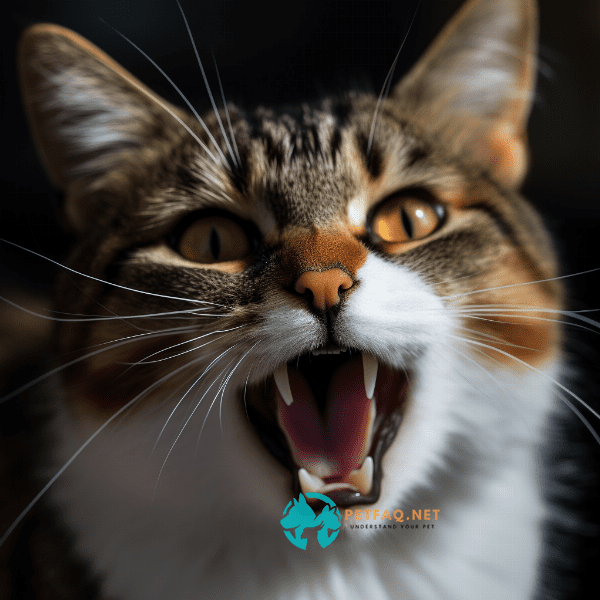
Importance of Preventing Cat Teeth Plaque: Benefits for Your Cat’s Health
Preventing cat teeth plaque is crucial to maintaining your cat’s overall health and well-being. Here are some of the key benefits of preventing plaque buildup in your cat’s mouth:
Reduced Risk of Dental Disease
By preventing cat teeth plaque, you can help reduce your cat’s risk of developing dental disease. Dental disease, including gingivitis and periodontitis, can be painful for your cat and lead to tooth loss and other health problems. By taking steps to prevent plaque buildup, such as regular dental cleanings and brushing your cat’s teeth, you can help reduce the risk of these conditions.
Improved Digestive Health
When your cat has plaque buildup in their mouth, it can affect their ability to eat and digest food properly. Plaque can cause pain and discomfort, which can lead to a decreased appetite and difficulty chewing food. By preventing plaque buildup and maintaining good dental health, you can help ensure that your cat is able to eat and digest food properly, which can improve their overall health and well-being.
Prevention of Systemic Infections
In addition to dental disease, cat teeth plaque can also lead to systemic infections. The bacteria that accumulate in plaque can enter your cat’s bloodstream and cause infections in other parts of the body, including the heart, liver, and kidneys. By preventing plaque buildup and maintaining good dental health, you can help reduce the risk of these infections and keep your cat healthy.
Improved Quality of Life
By preventing cat teeth plaque and maintaining good dental health, you can help improve your cat’s quality of life. Cats with dental problems may experience pain, discomfort, and difficulty eating, which can all affect their overall well-being. By taking steps to prevent plaque buildup and maintaining good dental health, you can help ensure that your cat is able to live a happy, healthy life.
In summary, preventing cat teeth plaque is important for maintaining your cat’s overall health and well-being. By taking steps to prevent plaque buildup and maintain good dental health, you can help reduce the risk of dental disease, improve digestive health, prevent systemic infections, and improve your cat’s quality of life.
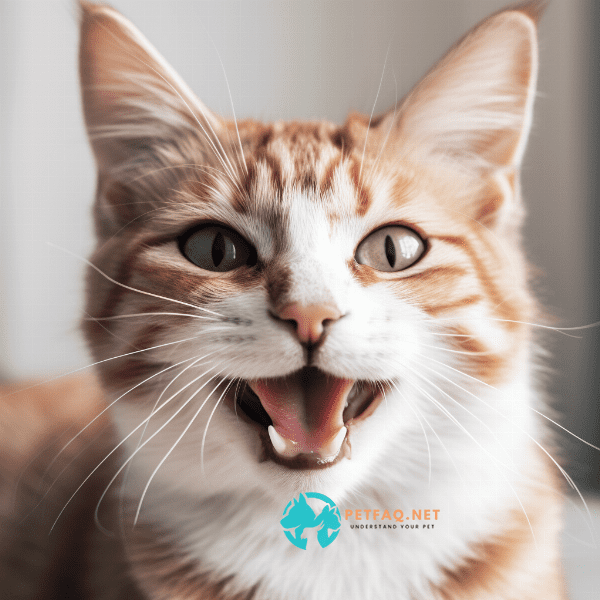
Best Practices for Brushing Your Cat’s Teeth: A Step-by-Step Guide
Choose the Right Toothbrush and Toothpaste
When it comes to brushing your cat’s teeth, choosing the right toothbrush and toothpaste is important. Look for a soft-bristled toothbrush that is specifically designed for cats, as well as a toothpaste that is safe for cats to ingest. Avoid using human toothpaste, as it can be harmful to your cat.
Get Your Cat Used to the Toothbrush
Before you begin brushing your cat’s teeth, it’s important to get them used to the toothbrush. Let your cat sniff and explore the toothbrush, and offer them a taste of the toothpaste to get them used to the flavor. You can also use your finger to rub the toothpaste on your cat’s teeth and gums to get them used to the sensation.
Position Your Cat Correctly
When brushing your cat’s teeth, it’s important to position them correctly. Hold your cat securely in your lap, and use your non-dominant hand to hold their head steady. Use your dominant hand to hold the toothbrush and brush your cat’s teeth.
Brush Your Cat’s Teeth
Begin by gently brushing the outside surfaces of your cat’s teeth, using a circular motion. Be sure to brush all the way to the gumline, as this is where plaque tends to accumulate. Then, move on to the inside surfaces of your cat’s teeth, using the same circular motion. Finally, brush your cat’s molars, which are the teeth at the back of the mouth.
Reward Your Cat
After brushing your cat’s teeth, be sure to reward them with praise and treats. This will help make tooth brushing a positive experience for your cat and encourage them to cooperate in the future.
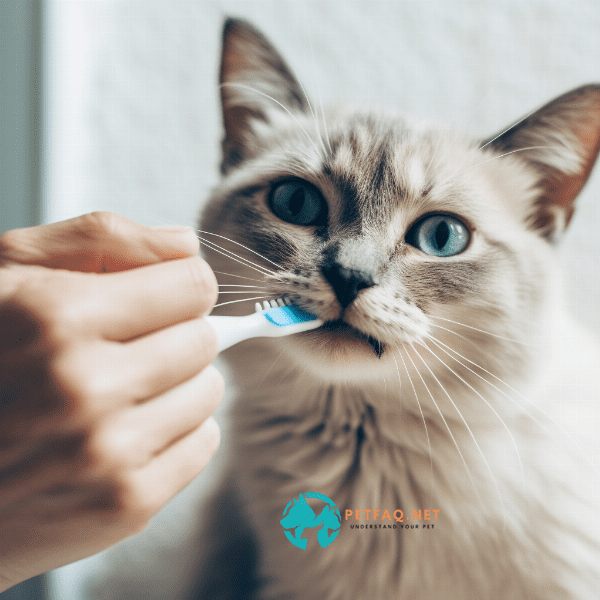
Alternative Options for Removing Cat Teeth Plaque: From Dental Treats to Water Additives
In addition to brushing your cat’s teeth, there are a variety of alternative options for removing cat teeth plaque. Here are some options to consider:
Dental Treats
Dental treats are a popular option for removing cat teeth plaque. These treats are designed to help remove plaque and tartar buildup from your cat’s teeth as they chew. Look for dental treats that are specifically designed for cats and that have the Veterinary Oral Health Council (VOHC) seal of approval.
Dental Sprays
Dental sprays are another option for removing cat teeth plaque. These sprays are applied directly to your cat’s teeth and gums and work by reducing the bacteria in your cat’s mouth that contribute to plaque buildup. Look for dental sprays that are specifically designed for cats and that have been approved by your veterinarian.
In summary, there are a variety of alternative options for removing cat teeth plaque in addition to brushing your cat’s teeth. By incorporating dental treats, water additives, dental wipes, or dental sprays into your cat’s dental care routine, you can help prevent plaque buildup and maintain good dental health. Be sure to consult with your veterinarian to determine the best option for your cat.
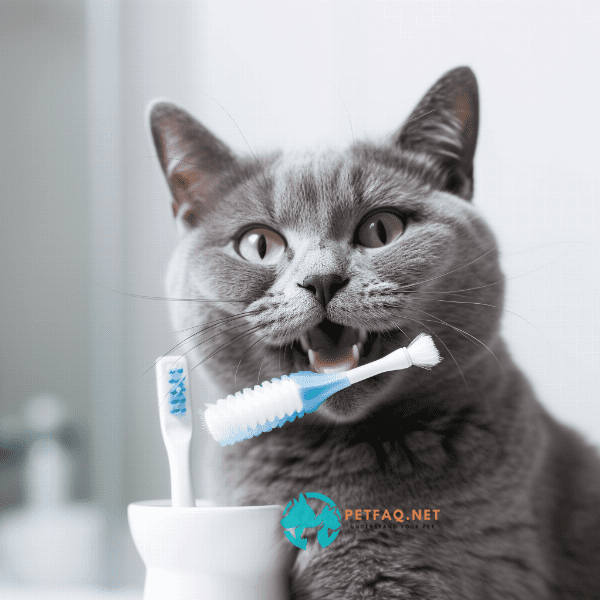
Cat Teeth Plaque Prevention Through Diet: Choosing the Right Food for Your Feline
Your cat’s diet can play a major role in preventing cat teeth plaque. By choosing the right food for your feline, you can help reduce the risk of plaque buildup and maintain good dental health. Here are some tips for choosing the right food for your cat:
Look for Dental Diets
Some cat foods are specifically designed to promote dental health and reduce the risk of plaque buildup. These diets often have a unique kibble shape and texture that helps to scrub your cat’s teeth as they chew. Look for dental diets that have the Veterinary Oral Health Council (VOHC) seal of approval.
Choose Wet Food
Wet food can also be a good option for preventing cat teeth plaque. Wet food is less likely to stick to your cat’s teeth than dry food, which can help reduce the risk of plaque buildup. Additionally, wet food contains a higher moisture content, which can help promote healthy saliva production and reduce the risk of dental disease.
Avoid High-Carbohydrate Foods
Foods that are high in carbohydrates can contribute to the formation of plaque on your cat’s teeth. Look for cat foods that are high in protein and low in carbohydrates. These foods can help promote good dental health and reduce the risk of plaque buildup.
Incorporate Raw Bones
Raw bones can be a good addition to your cat’s diet for promoting dental health. Chewing on raw bones can help remove plaque buildup from your cat’s teeth and promote healthy teeth and gums. However, it’s important to ensure that the bones are raw and never cooked, as cooked bones can be dangerous for your cat to consume.
In summary, choosing the right food for your cat is an important part of preventing cat teeth plaque. By incorporating dental diets, wet food, low-carbohydrate foods, and raw bones into your cat’s diet, you can help promote good dental health and reduce the risk of plaque buildup. Be sure to consult with your veterinarian to determine the best diet for your cat’s individual needs.
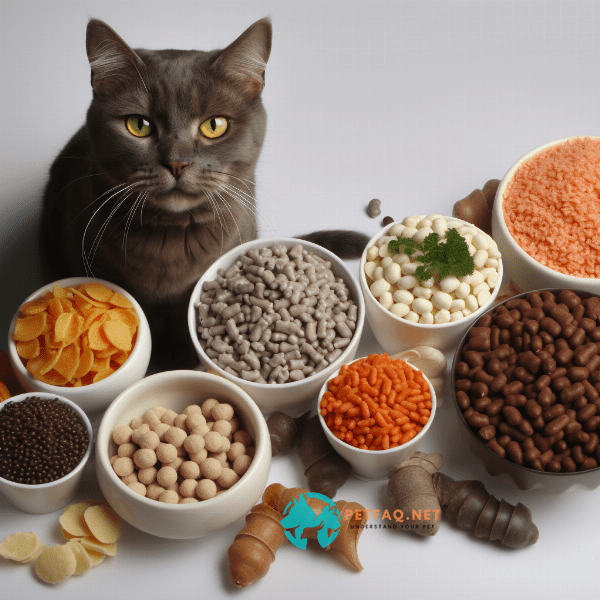
Regular Veterinary Check-Ups: How They Can Help Prevent Cat Teeth Plaque
Regular veterinary check-ups are an important part of preventing cat teeth plaque. Here are some ways that regular check-ups with your veterinarian can help prevent plaque buildup:
Professional Dental Cleanings
During your cat’s regular check-up, your veterinarian will examine your cat’s teeth and gums for signs of plaque buildup and dental disease. If necessary, they may recommend a professional dental cleaning to remove any plaque or tartar that has accumulated on your cat’s teeth. This can help prevent the progression of dental disease and reduce the risk of tooth loss.
Early Detection of Dental Disease
Regular check-ups with your veterinarian can also help detect dental disease in its early stages. This can be important for preventing the progression of the disease and reducing the risk of serious health problems. If your veterinarian detects signs of dental disease during a check-up, they may recommend additional treatments to help prevent the disease from worsening.
Advice on Dental Care
Your veterinarian can also provide advice on dental care for your cat. They can recommend the best toothbrush and toothpaste for your cat, as well as provide tips for brushing your cat’s teeth effectively. They can also recommend other dental care products, such as dental treats or water additives, that can help prevent plaque buildup and maintain good dental health.
Monitoring Overall Health
Regular check-ups with your veterinarian can also help monitor your cat’s overall health. Many health problems, including dental disease, can have an impact on your cat’s overall health and well-being. By monitoring your cat’s health through regular check-ups, your veterinarian can help ensure that any health problems are detected and treated early.
In summary, regular veterinary check-ups are an important part of preventing cat teeth plaque. By providing professional dental cleanings, detecting dental disease early, providing advice on dental care, and monitoring your cat’s overall health, your veterinarian can help ensure that your cat maintains good dental health and overall well-being.
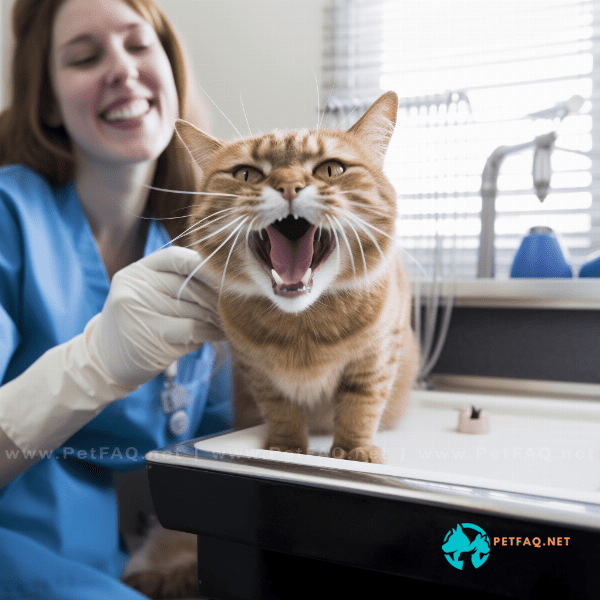
Overcoming Resistance: Tips for Introducing Your Cat to Dental Care
Introducing your cat to dental care can be challenging, especially if your cat is resistant to having their teeth brushed. Here are some tips for overcoming resistance and introducing your cat to dental care:
Start Slowly
When introducing your cat to dental care, it’s important to start slowly. Begin by simply letting your cat sniff and explore the toothbrush and toothpaste. Then, try rubbing a small amount of toothpaste on your cat’s teeth and gums using your finger. Gradually work up to brushing your cat’s teeth with a toothbrush.
Use Positive Reinforcement
Positive reinforcement can be an effective way to encourage your cat to cooperate during dental care. Offer your cat treats and praise throughout the process to make it a positive experience for them. Be sure to reward your cat after each dental care session to encourage them to cooperate in the future.
Be Patient
Introducing your cat to dental care can take time and patience. Don’t get discouraged if your cat is resistant at first. Keep working with them, using positive reinforcement and starting slowly, until they become more comfortable with dental care.
Consider Professional Help
If your cat is particularly resistant to dental care, consider seeking professional help. Your veterinarian can provide advice and guidance on introducing your cat to dental care, as well as offer other options for preventing cat teeth plaque, such as dental treats or water additives.
In summary, introducing your cat to dental care can be challenging, but it’s an important part of preventing cat teeth plaque and maintaining good dental health. By starting slowly, using positive reinforcement, being patient, and seeking professional help if necessary, you can help ensure that your cat is comfortable with dental care and maintains a healthy, happy smile.
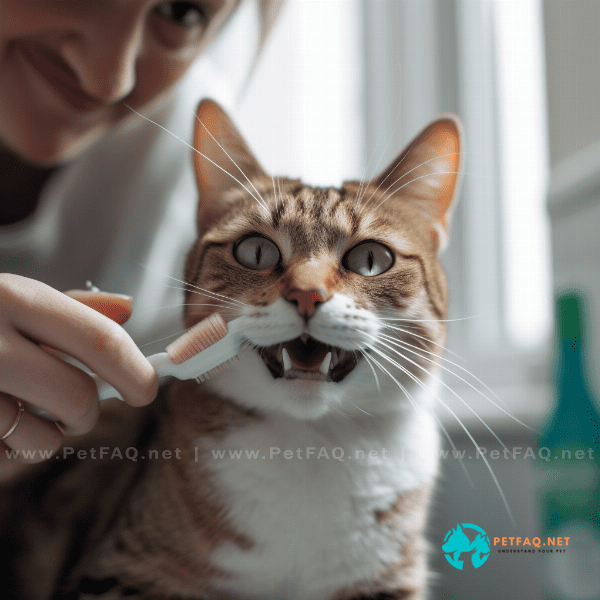
The Role of Genetics in Cat Teeth Plaque: Understanding Your Cat’s Unique Dental Health
Genetics can play a role in the development of cat teeth plaque. Some cats may be more prone to plaque buildup due to their genetic makeup. Here are some things to consider when understanding your cat’s unique dental health:
Breeds Prone to Dental Disease
Some cat breeds may be more prone to dental disease and plaque buildup than others. For example, Siamese cats may be more prone to dental disease due to their genetic makeup. If you have a cat that is prone to dental disease, it’s important to be proactive about dental care to prevent the progression of the disease.
Understanding Your Cat’s Dental History
Understanding your cat’s dental history can also provide insight into their unique dental health. If your cat has a history of dental problems, it’s important to be extra vigilant about dental care to prevent future problems. Be sure to discuss your cat’s dental history with your veterinarian to determine the best approach to dental care.
Regular Dental Check-Ups
Regular dental check-ups with your veterinarian are important for monitoring your cat’s dental health, regardless of their genetic makeup. Your veterinarian can provide professional dental cleanings, detect dental disease in its early stages, and provide advice on dental care to help prevent plaque buildup.
In summary, genetics can play a role in the development of cat teeth plaque, but there are still steps that can be taken to prevent plaque buildup and maintain good dental health. By being proactive about dental care, understanding your cat’s dental history, and scheduling regular dental check-ups with your veterinarian, you can help ensure that your cat maintains a healthy, happy smile.

Long-Term Care: Maintaining Your Cat’s Dental Health for a Lifetime
Maintaining your cat’s dental health requires ongoing care and attention. Here are some tips for maintaining your cat’s dental health for a lifetime:
Stick to a Dental Care Routine
Consistency is key when it comes to maintaining your cat’s dental health. Stick to a regular dental care routine that includes brushing your cat’s teeth, providing dental treats or water additives, and scheduling regular dental check-ups with your veterinarian.
Monitor Your Cat’s Dental Health
Keep an eye on your cat’s dental health and be on the lookout for signs of plaque buildup or dental disease. If you notice any changes in your cat’s dental health, such as bad breath, yellowing teeth, or swollen gums, be sure to schedule a dental check-up with your veterinarian.
Consider Professional Dental Cleanings
Regular professional dental cleanings can help prevent plaque buildup and maintain good dental health. Talk to your veterinarian about scheduling regular cleanings for your cat to help keep their teeth and gums healthy.
Choose the Right Diet
Choosing the right diet for your cat can also play a role in maintaining their dental health. Look for dental diets or wet food that can help prevent plaque buildup, and avoid high-carbohydrate foods that can contribute to plaque formation.
Be Patient and Persistent
Maintaining your cat’s dental health can take time and patience. Be persistent in your dental care routine, and don’t get discouraged if your cat is resistant at first. Over time, with patience and persistence, your cat can become more comfortable with dental care.
In summary, maintaining your cat’s dental health requires ongoing care and attention. By sticking to a dental care routine, monitoring your cat’s dental health, considering professional cleanings, choosing the right diet, and being patient and persistent, you can help ensure that your cat maintains a healthy, happy smile for a lifetime.
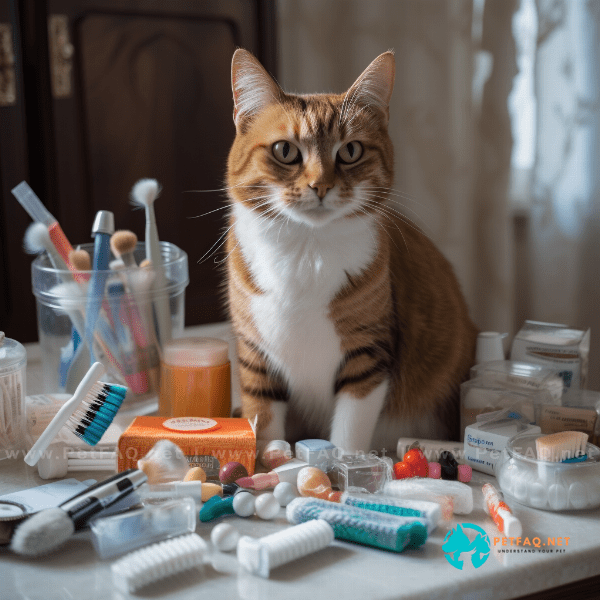
Frequently Asked Questions (FAQs) about cat teeth plaque:
1. Are there any specific breeds of cats that are more prone to developing teeth plaque than others?2. Can cat teeth plaque lead to more serious dental problems, such as gingivitis or periodontal disease?
3. What are the symptoms of cat teeth plaque, and how can it affect my cat's health?
4. What are the potential risks and complications of cat teeth plaque if left untreated?
5. How often should I have my cat's teeth professionally cleaned to prevent plaque buildup?



